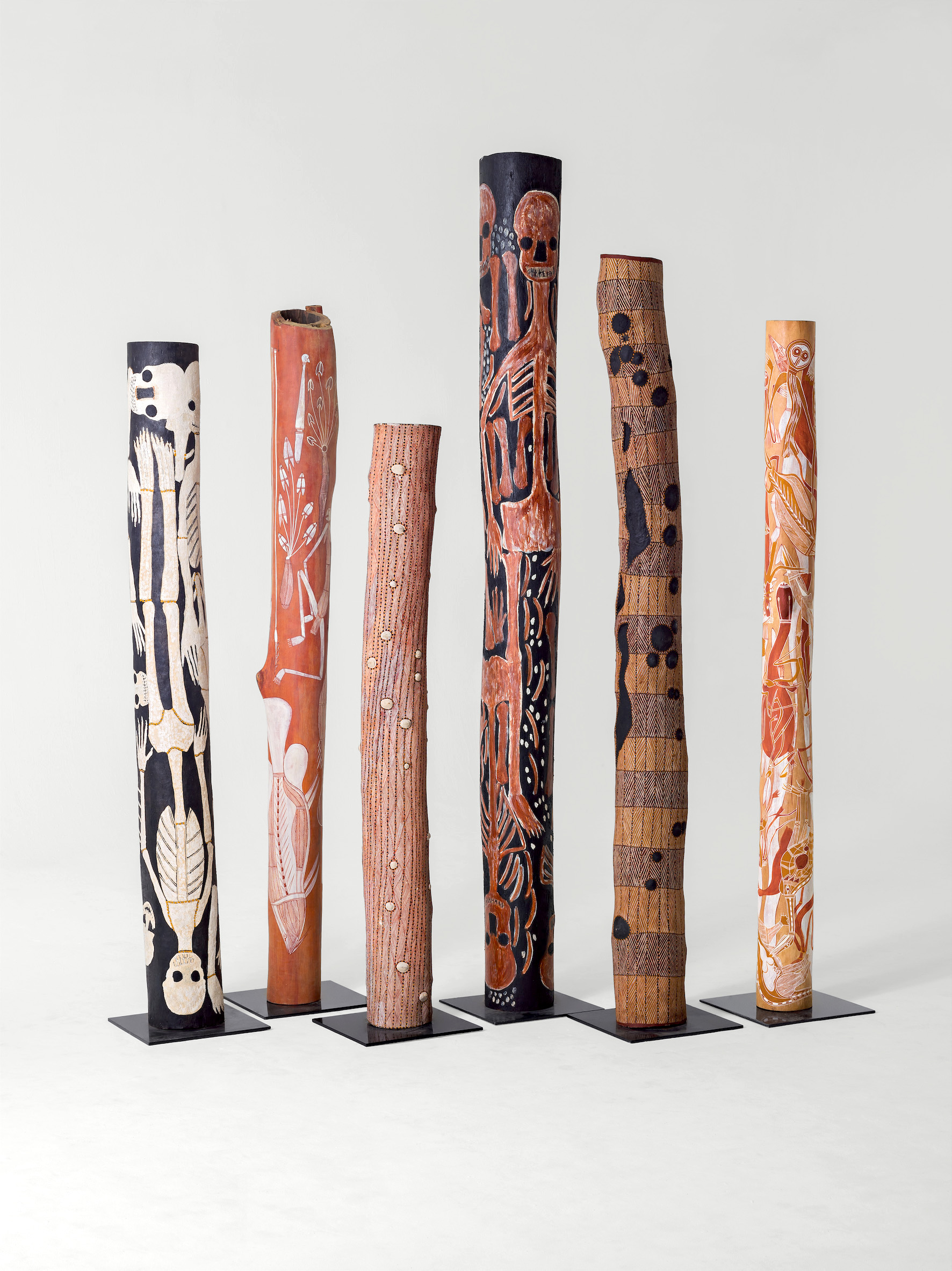
Artworks part of exhibition ‘The Inside World: Contemporary Aboriginal Australian Memorial Poles’ – Image copyright and courtesy of Injalak Arts.
The Inside World: Contemporary Aboriginal Australian Memorial Poles consists of a forest of 112 painted, wooden memorial poles from northern Australia, derived from the Collection of Dennis and Debra Scholl and the Kluge-Ruhe Aboriginal Art Collection of UVA.
The Inside World presents 112 memorial poles by 55 artists from remote Aboriginal communities in the tropical northern region of Australia known as Arnhem Land. Traditionally, these poles—known as lorrkkon, ḏupun, or ḻarrakitj—were used to house the bones of the deceased. Interment in a memorial pole marked the final point in a long and complex funeral process designed to guide the spirit of the deceased on its final journey. It signified the moment when spirits were considered to have finally returned to their ancestral homes—when they had left all vestiges of the mundane “outside” world and become one with the “inside” realm of the ancestral world. Today, these poles are made as works of art, and artists included in the exhibition are some of the most respected contemporary artists working in Australia today. These include John Mawurndjul, who was recently honored with a major retrospective at the Museum of Contemporary Art in Sydney and the Art Gallery of South Australia in Adelaide, and Djambawa Marawili, whose work has been included in the Moscow, Istanbul and Sydney Biennales. Contemporary memorial poles are not ritual objects in themselves, but metaphors for the crossing of cultures: spirit vessels designed to hint at the existence of the elusive world of ancestral energy that permeates through all things. The result is not a picture of dying cultures, but a celebration of life. Walking in this forest of bones, we find ourselves reborn. Faced with this joyous elucidation of a culture so distant and different to our own, the world is made more alive.
The Inside World is a collaboration between The Fralin Museum of Art and the Kluge-Ruhe Aboriginal Art Collection. The works are drawn from the collections of Miami based philanthropists Debra and Dennis Scholl and the Kluge-Ruhe Aboriginal Art Collection of the University of Virginia. The exhibition was organized by the Nevada Museum of Art, and is accompanied by a fully-illustrated catalogue edited by Henry Skerritt, Curator of the Kluge-Ruhe Aboriginal Art Collection.
SOURCES: Kluge-Ruhe Aboriginal Art Collection and The Fralin Museum of Arts.